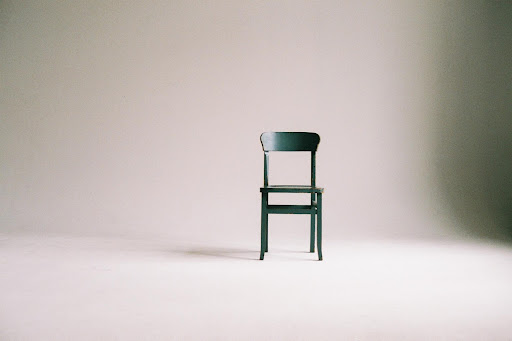Minimalism in art and design has captured the imagination and appreciation of many throughout history. With its emphasis on simplicity, purity, and refined aesthetics, minimalism encourages us to focus on the essentials and experience beauty in stripped-down forms. In this article, we delve into the world of minimalism, its origin and principles, and the works of storied masters who have inspired generations of artists and designers alike.
Table of Contents
History snd Principles
While minimalism’s roots can be traced back to ancient civilizations and their art forms, modern minimalism emerged primarily in the 1960s as a reaction against the complex and ornate designs that dominated post-war America. Artists and designers sought freedom from the heavy-weighted imageries and expressions of abstract expressionism, turning their focus on geometric forms and monochromatic palettes to challenge the norms of what art could and should be.
There are a few key principles to the concept of minimalism:
- Less is more: Emphasizing simplicity, minimalism strips away unnecessary elements to focus on the bare essentials. This approach allows the viewer to appreciate the core elements of a piece without distraction.
- Focus on form and materials: Minimalist art and design prioritize geometric shapes, architectural construction, and a limited range of materials to emphasize quality over quantity.
- Clarity and purity: Minimalism seeks to create an unobstructed, clean aesthetic that promotes a sense of calm and order.
- Functionality and utility: In minimalist design, the emphasis is often on practicality and utility. This principle ensures that minimalist designs are both beautiful and purposeful.
Design and Fashion
In addition to art, minimalism has also heavily influenced the field of design. The Bauhaus movement, German industrial design, and many modern architectural styles showcase the minimalist ethos of simplicity, functionality, and reductionism. Notable designers, such as Dieter Rams and Mies van der Rohe, have pioneered minimalist design, creating iconic works that demonstrate how simplicity can elevate even everyday objects, buildings, and spaces.
Another area where minimalism has made its mark is in the design of virtual invitations. By employing the principles of minimalism, designers can create elegant and visually appealing invitations that focus on essential information and avoid unnecessary clutter. This simplicity not only makes for a more refined user experience but also reflects the values of eco-friendliness and digital convenience.
Minimalism has also been welcomed in the fashion industry, where it is expressed through streamlined designs, basic colors, and sustainable fabrics. Designers like Jil Sander and Calvin Klein have led the way in minimalist fashion, focusing on creating wardrobe essentials that embody simplicity, elegance, and sophistication. In a world where consumerism and fast fashion often dominate, minimalism in fashion invites us to reevaluate the importance of quality, craftsmanship, and timeless style.
Technology, Literature, and Film
Technology and digital design are not exempt from minimalism. Tech giants such as Apple have embraced minimalistic principles, applying them in both hardware and software design. This focus on simplicity, refinement, and functionality allows for the creation of stylish, user-friendly products that resonate with people around the globe. Minimalism in technology challenges us to rethink the way we interact with digital devices, ultimately enhancing our experiences and overall satisfaction.
Minimalism also permeates the worlds of literature and film, transcending the visual arts and design realms. In literature, minimalistic writers like Ernest Hemingway and Raymond Carver craft concise, sparse narratives that leave room for interpretation. Similarly, minimalistic film directors, such as Jim Jarmusch and Sofia Coppola, create movies with stripped-down visuals, simple scores, and narratives that challenge audiences to find meaning in the subtleties. This minimalistic approach encourages viewers and readers to engage more deeply and thoughtfully with the content.
Minimalist Icons
- Donald Judd: An influential figure in minimalism, Judd’s sculptures and installations embrace simplicity and industrial materials. His work, such as the famous “Untitled” (1969), is composed of box-like shapes made from metals, Plexiglass, or wood, often arranged in geometric patterns, reflecting his guiding principle: “A shape, a volume, a color, a surface is something in itself.”
- Agnes Martin: Known for her serene, grid-based paintings that merge minimalism with abstract expressionism, Martin’s work emphasizes the importance of subtle differences in color and pattern within a limited range. The titles of her pieces, such as “With My Back to the World” (1997), often evoke introspective and contemplative emotions.
- Frank Stella: An early adopter of minimalism, Stella’s paintings focus on simplified geometric shapes and vibrant colors. His iconic “Black Paintings” series (1958-1960) features parallel black lines with unpainted canvas in between, disrupting the complexity of traditional artworks and focusing on form and color alone.
Applying the Principles in Our Lives
Minimalism does not only inform creative pursuits but can also inspire a deeper, more profound way of living. By embracing minimalism’s principles, we can declutter our surroundings, gain mental clarity, and focus on what truly matters. Adopting a minimal mindset helps us appreciate the art of subtraction and recognize that sometimes, less really is more.
The exploration of minimalism in art and design can open our eyes to the beauty of simplicity, form, and pure expression. As we delve into the works of the iconic artists and designers who have shaped this movement, we can better appreciate the core principles of minimalism and integrate them into our lives. In doing so, we can discover the profound and lasting impact of stripped-down, refined aesthetics on our creative pursuits and daily experiences.
















